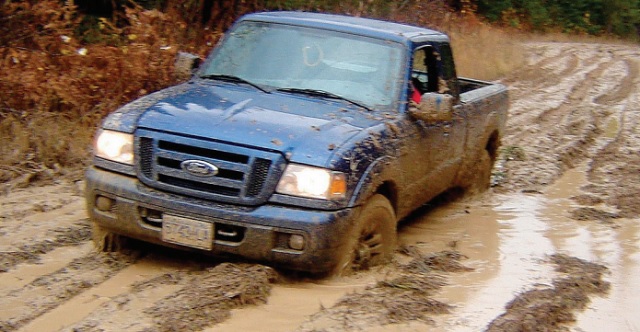
It might be wiser to reverse and try another way
Kampala, Uganda | MOTORING GURU | In our continuing series on driving during the rainy season, we explore the slippery issue of driving on muddy roads and avoiding getting stuck.
Driving in the mud skills usually come in handy when you encounter three types of earth (murram) road; one with muddy water which spreads across the road and leaves you unsure of what is beneath the surface, another which is so thick with mud that ensures your tyres don’t reach the road surface or stick to your tyres so that, instead on driving on tyres your drive on mud, and one where other vehicles have passed after it has rained.
Usually, safety involves three thing: judging when to proceed and when to stop, mastering how to steer the vehicle when it appears to run out of your hands as the tyres lose grip with the road surface, and what to do in case the worst happens and you get stuck.
In all these situations, you must familiarise yourself with driving in a rare gear “L”. The L on your gear lever stands for “Low Gear” and in muddy or slippery situations; the vehicle should be driven in L. Part of the reason for this is that the L gear gives your engine more efficiency at lower power or; stated technically, more torque with less power. This is important because, in actual mud driving situations, you need more engine efficiency at less speed. So the L gear makes the engine perform as if it is doing a high speed, when in reality you are moving very, very slowly.
You notice the difference if you drive in mud the way you always drive on a clean road – in D for drive. When you drive in D, an automatic transmission car automatically finds the right gear. So it automatically shifts from low to high gear as you speed and the car demands more power. To get that power it drinks more fuel. But when you engage L, you are effectively telling the engine to do more on less because we are not sprinting but pulling ourselves out of a rut. It is the same reason that towing is done in L gear. The engine parts rotate faster at lower speeds. You get more power.
Now that we know the value of L, we proceed to the actual driving.
The first rule is to know your vehicle. Don’t simply attempt situations because another car has done it. That car might have a higher clearance, better grip tyres, or more power. Sometimes your car might get stuck for something as basic as low tyre pressure stuck which will spread weight and kill traction. Imaging rolling a loaded bicycle with low pressure and you get the idea.
The second rule is to know the road. If necessary get out and wade through the mud. It is better than proceeding and getting stuck. Sometimes cars with higher clearance will leave deep ruts on the sides and high dry ground in the middle. When you attempt to follow them, you find you belly sitting on the high ground as your tyres float without grip. Avoid that.
The third rule is to ensure that your tyres get a good grip. Driving too fast ensures you do not get a grip. But driving too slowly, especially in stick mud, will allow it to get stuck on your tyres and cost you the desired grip. In both cases, you will feel the car not responding to your steering, especially on slippery roads. Avoid braking as this worsens the skidding. Instead, slow down by keeping your foot off the accelerator. Recall that you are in L gear – and can get more with less! Start accelerating slowly when you feel the car getting a grip.
Finally, when you feel you are getting stuck in the mud, do not push it with more power. It might be wiser to reverse and try another way.
 The Independent Uganda: You get the Truth we Pay the Price
The Independent Uganda: You get the Truth we Pay the Price


